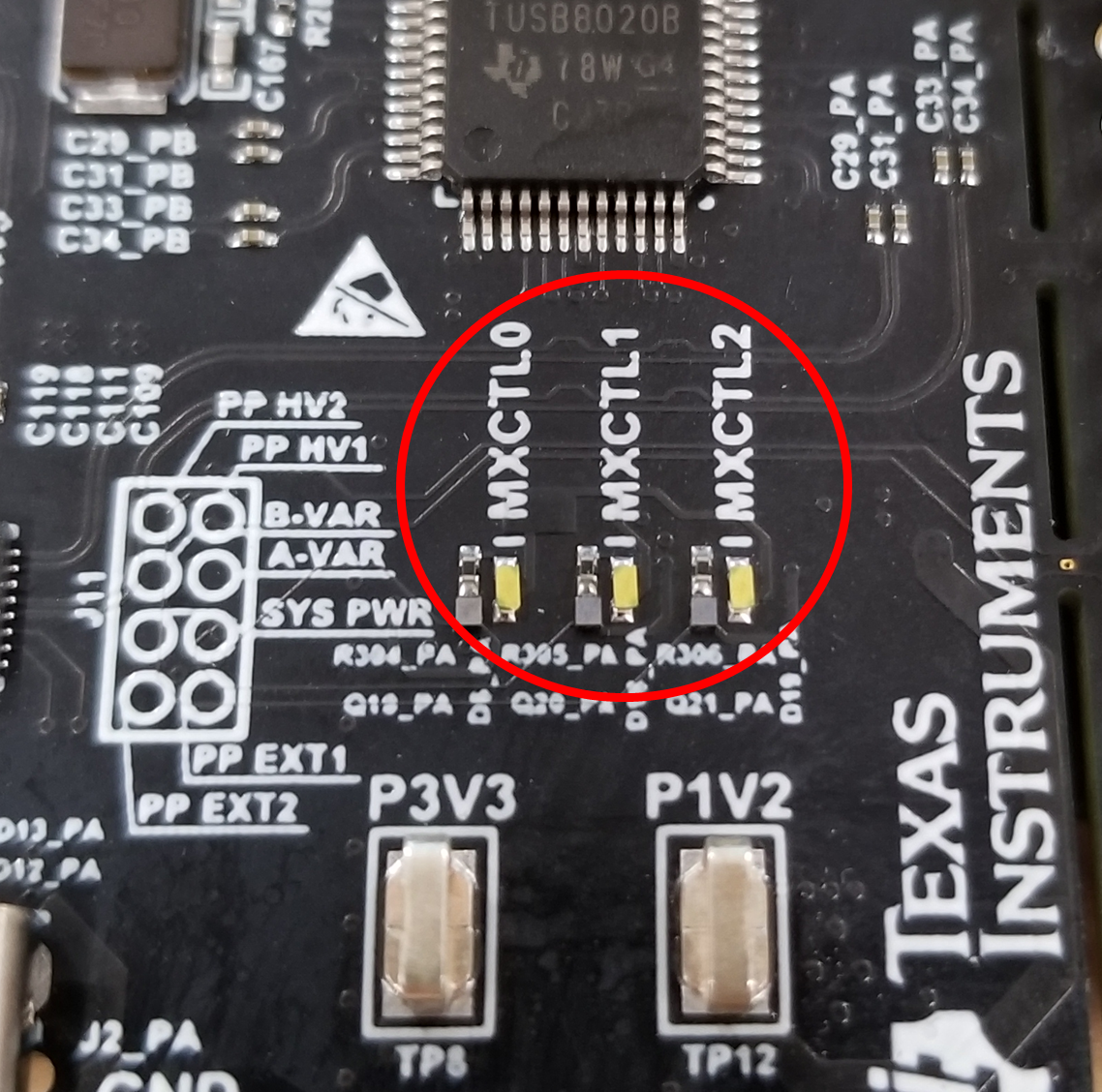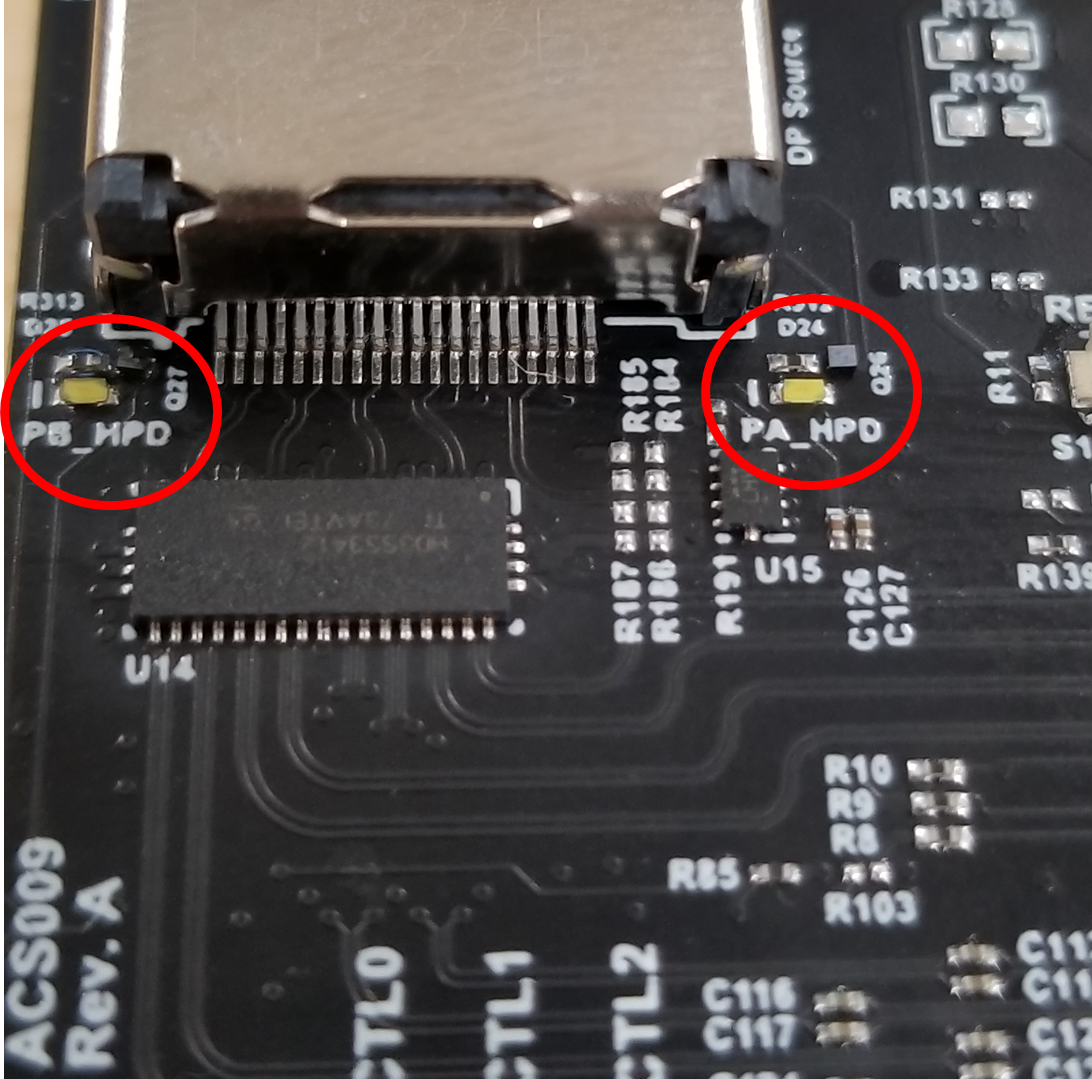SLVUB62B June 2017 – November 2020
- Trademarks
- 1 About this Manual
- 2 Information About Cautions and Warnings
- 3 Items Required for Operation
- 4 Introduction
-
5 Setup
- 5.1
Switch, Push Button, Connector, and Test Point Descriptions
- 5.1.1 Power Path Jumper Configuration
- 5.1.2 DP Source Receptacle
- 5.1.3 S1 HRESET Push-Button
- 5.1.4 S6 SPI MISO Pull Down Button
- 5.1.5 S3: FTDI Enable and Disable
- 5.1.6 S2: SPI , I2C, and BusPowerZ Configurations
- 5.1.7 J1: Barrel Jack Power Connector
- 5.1.8 Barrel Jack Detect
- 5.1.9 USB Type B Connector (J11)
- 5.1.10 USB Type-CConnector (J2)
- 5.1.11 USB Micro B Connector (J9)
- 5.1.12 TP13 (5 V), TP8 (3.3 V), and TP12 (1.2 V)
- 5.1.13 Aardvark Connector (J10)
- 5.1.14 TP10, TP11, TP15, TP16, TP17, TP18, TP9: GND Test Points
- 5.1.15 TP1, TP2, TP3 and TP4 – CC1 and CC2 Test Points
- 5.1.16 TP14 (PA and PB): VBUS Test Point
- 5.1.17 TP7, TP6, and TP5: A-VAR, B-VAR, and System Power Test Points Respectively
- 5.1.18 J3 and J4 (Bottom of EVM): Signal Headers
- 5.2 LED Indicators Description
- 5.1
Switch, Push Button, Connector, and Test Point Descriptions
- 6 Using the TPS65988EVM
- 7 Connecting the EVM
- 8 REACH Compliance
- 9 TPS65988EVM Schematic
- 10TPS65988EVM Board Layout
- 11TPS65988EVM Bill of Materials
- 12Revision History
5.2.1 MXCTL0-2 and HPD LEDs (SS MUX Control LED)
These LEDs correspond to the MUX control signals needed for the SS MUX on either USB Type-C port. Figure 5-37 and Figure 5-38 Table 5-1 highlight these features and Table 5-1 and Table 5-2 summarize the LED behavior.
 Figure 5-37 MUX Control LEDs
Figure 5-37 MUX Control LEDs Figure 5-38 HPD Port A/B LEDs
Figure 5-38 HPD Port A/B LEDsTable 5-1 Port A SS MUX Control LED Functions
| LED Indicator | GPIO | Function |
|---|---|---|
| D6 - MXCTL0 | GPIO6 | USB 3.0 event |
| D18 - MXCTL1 | GPIO5 | DP mode event |
| D19 - MXCTL2 | GPIO7 | Cable orientation event |
| D24 - PA_HPD | GPIO3 | HPD |
Table 5-2 Port B SS MUX Control LED Functions
| LED Indicator | GPIO | Function |
|---|---|---|
| D6 - MXCTL0 | GPIO_1 | USB 3.0 event |
| D18 - MXCTL1 | GPIO_0 | DP mode event |
| D19 - MXCTL2 | GPIO_2 | Cable orientation event |
| D25 - PB_HPD | GPIO_4 | HPD |